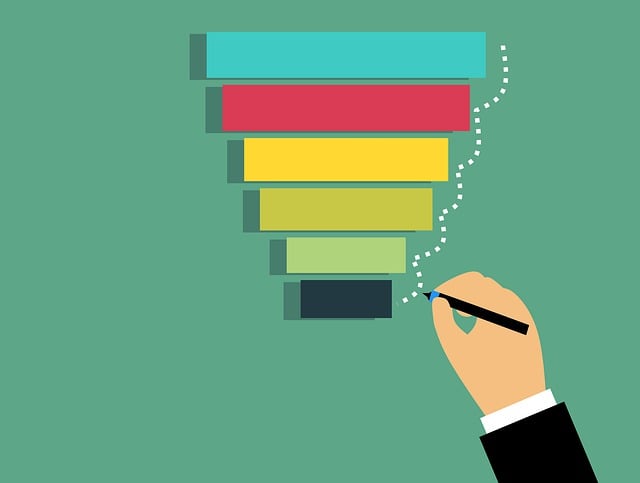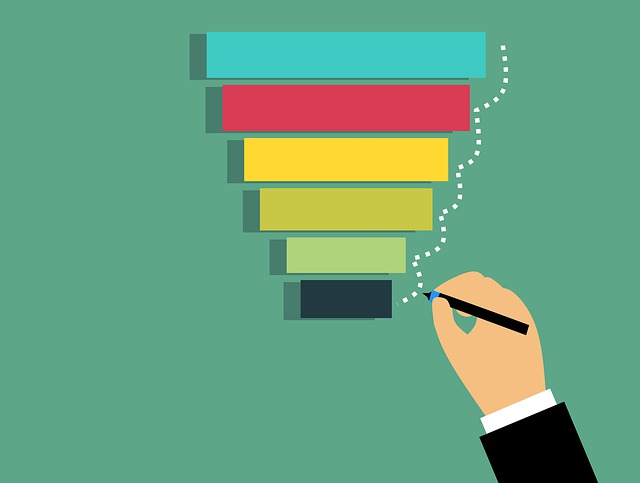Archive
Creating Irresistible Affiliate Offers with ClickFunnels
Hey guys! Today I want to talk to you about creating irresistible affiliate offers with ClickFunnels. As an affiliate marketer, your success largely depends on your ability to create offers that your audience can’t resist. And that’s where ClickFunnels comes in handy.
First things first, let’s define what an irresistible offer is. An irresistible offer is an offer that your audience can’t say no to. It’s an offer that’s so good that they feel like they’re missing out if they don’t take advantage of it. Now, let’s get into how you can create such an offer with ClickFunnels.
1. Identify your audience’s pain points
The first step in creating an irresistible offer is to identify your audience’s pain points. What are the problems they’re facing that you can solve? Once you’ve identified those pain points, you can create an offer that addresses them.
2. Create a lead magnet
A lead magnet is something that you offer your audience in exchange for their contact information. It can be an ebook, a checklist, a video series, or anything else that provides value. The key is to make sure that your lead magnet is relevant to your audience’s pain points.
3. Create a sales funnel
A sales funnel is a series of steps that your audience goes through to become a customer. ClickFunnels makes it easy to create a sales funnel that guides your audience through the buying process. Your sales funnel should include the lead magnet, a tripwire offer, and a core offer.
4. Create a tripwire offer
A tripwire offer is a low-cost, high-value offer that’s designed to get your audience to take the first step towards becoming a customer. It should be something that’s irresistible, such as a discount or a bundle deal. Once your audience has made a purchase, they’re more likely to make another one.
5. Create a core offer
Your core offer is your main product or service. It should be something that’s valuable and relevant to your audience’s pain points. ClickFunnels makes it easy to create a sales page that showcases your core offer and convinces your audience to buy.
6. Create urgency
Urgency is the key to making your offer irresistible. You can create urgency by setting a deadline or limiting the number of products available. ClickFunnels makes it easy to add countdown timers and scarcity elements to your sales pages.
In conclusion, creating irresistible affiliate offers with ClickFunnels is easy if you follow these steps. Identify your audience’s pain points, create a lead magnet, create a sales funnel, create a tripwire offer, create a core offer, and create urgency. With these elements in place, you’ll be able to create offers that your audience can’t resist. Happy selling!
This post may contain affiliate links, where I may receive a small commission if you purchase something through following the link at no cost to you.
Building Effective Sales Funnels: A Comprehensive Guide
Hey there! Are you struggling to make sales? Do you feel like you’re putting in a lot of effort but not seeing the results you want? You’re not alone. Many businesses struggle with this issue, but the good news is that there is a solution: building an effective sales funnel.
A sales funnel is a series of steps that a potential customer goes through before making a purchase. It’s important to note that not everyone who enters your sales funnel will end up making a purchase, but the goal is to increase the number of people who do. Here’s how to build an effective sales funnel:
Step 1: Identify your target audience
The first step in building an effective sales funnel is to identify your target audience. Who are the people who are most likely to be interested in your product or service? What are their pain points, and how can your product or service help solve them?

Step 2: Create a lead magnet
A lead magnet is something that you offer for free in exchange for someone’s contact information. This could be a free e-book, a webinar, or even a free trial of your product or service. The goal is to provide something of value that will entice people to give you their contact information.
Step 3: Create a landing page
A landing page is a page on your website that is specifically designed to capture leads. It should be simple, with a clear call-to-action (CTA) that tells people what they will get in exchange for their contact information.
Step 4: Set up an email sequence
Once someone has given you their contact information, you can start sending them emails. The goal of these emails is to build a relationship with your potential customer and to provide them with value. This could be through educational content, case studies, or even just helpful tips and advice.
Step 5: Make an offer
Once you have built a relationship with your potential customer, it’s time to make an offer. This could be a discount on your product or service, a free trial, or even just an invitation to schedule a consultation with you.
Step 6: Follow up
Not everyone will make a purchase after your initial offer, but that doesn’t mean they’re not interested. It’s important to follow up with these potential customers and continue building the relationship. This could be through additional emails, retargeting ads, or even just a personal phone call.
Building an effective sales funnel takes time and effort, but it’s worth it in the end. By following these steps, you can increase your chances of making more sales and growing your business.
This post may contain affiliate links, where I may receive a small commission if you purchase something through following the link at no cost to you.
Creating a High-Converting Sales Funnel: Tips and Tricks
Creating a high-converting sales funnel is essential for any business that wants to succeed. It’s not enough to have a great product or service; you need to be able to sell it effectively. In this post, I’ll be sharing some tips and tricks on how to create a sales funnel that converts.
First of all, it’s important to understand what a sales funnel is. A sales funnel is a series of steps that a potential customer goes through before they make a purchase. It starts with awareness of your brand or product, then moves on to interest, consideration, and finally, the purchase stage.
The first step in creating a high-converting sales funnel is to identify your target audience. You need to know who you’re selling to in order to create a funnel that will resonate with them. Once you’ve identified your target audience, you can start creating content that will attract them.

The next step is to create a landing page that is specifically designed to convert visitors into leads. Your landing page should have a clear and compelling headline, a strong call-to-action, and a lead magnet that will entice visitors to provide their email address.
Once you have captured a lead, it’s important to nurture them with targeted email campaigns. Your email campaigns should provide value to your leads and build trust with them over time. You can also segment your email list based on the actions they take on your website, such as downloading a lead magnet or adding a product to their cart.
The final stage of your sales funnel is the purchase stage. Your checkout process should be simple and straightforward, making it easy for customers to complete their purchase. You can also offer upsells and cross-sells to increase the average order value.
In conclusion, creating a high-converting sales funnel takes time and effort, but it’s worth it in the end. By understanding your target audience, creating a compelling landing page, nurturing leads with targeted email campaigns, and optimizing your checkout process, you can create a sales funnel that converts visitors into customers.
This post may contain affiliate links, where I may receive a small commission if you purchase something through following the link at no cost to you.
Why Every Business Needs a Sales Funnel
As a business owner, I know how tough it is to attract and retain customers. But I’ve discovered that having a sales funnel is the secret to success.
A sales funnel is a series of steps that a potential customer goes through before making a purchase. It involves attracting leads, nurturing them with targeted content, and ultimately converting them into paying customers.
Here’s why every business needs a sales funnel:

1. It helps you understand your customers
By creating a sales funnel, you can gain insights into your customers’ behavior and preferences. You can identify the touchpoints where they are most likely to convert and optimize those areas for better results. This allows you to tailor your marketing efforts to fit your customers’ needs and improve your overall sales strategy.
2. It increases conversions
A sales funnel is designed to guide customers towards a purchase. By providing valuable content and nurturing leads, you can build trust and increase the likelihood of a sale. The more targeted and personalized your funnel is, the higher your conversion rates will be.
3. It saves time and resources
Without a sales funnel, you may be wasting time and resources on unqualified leads. By using a sales funnel, you can focus on high-quality leads who are more likely to convert. This can save you time and money in the long run and help you maximize your ROI.
4. It builds relationships
A sales funnel is not just about making a sale. It’s also about building relationships with your customers. By providing valuable content and engaging with your audience, you can establish trust and loyalty. This can lead to repeat customers and positive word-of-mouth marketing.
In conclusion, a sales funnel is a crucial component of any successful business. It helps you understand your customers, increase conversions, save time and resources, and build relationships. So, if you haven’t already, it’s time to start building your own sales funnel and watch your business grow.
This post may contain affiliate links, where I may receive a small commission if you purchase something through following the link at no cost to you.
The Importance of Lead Magnets in Your Sales Funnel
Hey there! As someone who has been working in the world of online marketing for a while, I can confidently say that lead magnets are a crucial part of any successful sales funnel. In fact, I’d go so far as to say that they’re the foundation upon which the rest of your funnel is built.
So, what exactly are lead magnets? Essentially, they’re free resources that you offer to your audience in exchange for their contact information. This could be anything from an ebook or whitepaper, to a free trial of your product or service, to a webinar or video training series. The key is that it’s something valuable enough that people are willing to hand over their email address or phone number in order to access it.
Now, you might be wondering why you need to bother with lead magnets in the first place. After all, can’t you just drive traffic to your site and hope that people will eventually convert into paying customers? The short answer is no.

Here’s the thing: people are bombarded with marketing messages all day, every day. They’re not going to just hand over their hard-earned money to a company they don’t know and trust. That’s where lead magnets come in. By offering something of value upfront, you’re establishing yourself as a helpful, trustworthy resource in your audience’s eyes. It’s the first step in building a relationship with them.
But that’s not the only benefit of lead magnets. They also help you to:
- Build your email list. As I mentioned earlier, people need to provide their contact information in order to access your lead magnet. This means that you’re growing your email list with engaged, interested leads who are more likely to convert in the future.
- Segment your audience. Depending on the type of lead magnet you offer, you can gather information about your audience’s interests, pain points, or needs. This allows you to segment them into different groups and tailor your messaging to each group’s specific needs.
- Qualify leads. By offering a lead magnet that’s directly related to your product or service, you’re attracting leads who are already interested in what you have to offer. This makes them more qualified leads than someone who stumbled upon your site by accident.
So, how do you create a lead magnet that’s effective? Here are a few tips:
- Make it valuable. This should go without saying, but your lead magnet needs to actually be something your audience wants and needs. Do some research to find out what topics or pain points your audience is struggling with, and create a resource that addresses those issues.
- Make it easy to access. Don’t make people jump through hoops to get their hands on your lead magnet. Keep the opt-in process simple and straightforward.
- Promote it. Your lead magnet won’t do you any good if nobody knows it exists. Use social media, email marketing, and other channels to promote it and drive traffic to your opt-in page.
All in all, lead magnets are an essential part of any sales funnel. By offering something of value upfront, you’re building trust with your audience and laying the groundwork for future sales. So, what are you waiting for? Start brainstorming your next lead magnet today!
This post may contain affiliate links, where I may receive a small commission if you purchase something through following the link at no cost to you.
Segmenting Your Sales Funnel: How to Personalize Your Marketing Efforts
Hey there, fellow marketers!
As we all know, having a sales funnel is essential to any business. It’s the process that leads potential customers towards making a purchase. But did you know that segmenting your sales funnel is just as crucial? By doing so, you can personalize your marketing efforts and increase your conversion rates.
What is Segmenting Your Sales Funnel?

Segmenting your sales funnel means dividing your potential customers into specific groups or segments based on their behavior, interests, preferences, or demographics. By doing this, you can create targeted marketing messages that resonate with each segment, increasing the chances of them moving down the funnel.
Why Should You Segment Your Sales Funnel?
Segmenting your sales funnel has several benefits:
- Personalization: By targeting specific segments, you can create personalized marketing messages that speak directly to them, increasing the chances of them engaging with your brand.
- Higher conversion rates: Personalized marketing messages lead to higher conversion rates because they resonate better with potential customers.
- Cost-effectiveness: By focusing your marketing efforts on specific segments, you can save money on advertising and other marketing expenses.
- Better customer relationships: By delivering personalized messages, you can build stronger relationships with your customers, increasing their loyalty to your brand.
How to Segment Your Sales Funnel?
Segmenting your sales funnel involves several steps:
- Define your target audience: Identify the characteristics of your ideal customer, such as age, gender, location, interests, and behavior.
- Create buyer personas: Develop buyer personas for each segment based on their characteristics. This will help you understand their needs, pain points, and motivations.
- Track customer behavior: Use analytics tools to track customer behavior, such as website visits, email opens, and social media engagement. This will help you identify which segments are most engaged with your brand.
- Create targeted marketing messages: Create marketing messages that speak directly to each segment. This could include personalized emails, targeted social media ads, or customized landing pages.
- Test and optimize: Continuously test and optimize your marketing messages to improve their effectiveness.
Conclusion
Segmenting your sales funnel is a powerful way to personalize your marketing efforts and increase your conversion rates. By targeting specific segments with personalized messages, you can build stronger relationships with your customers, save money on advertising, and improve your overall marketing ROI. So, what are you waiting for? Start segmenting your sales funnel today!
This post may contain affiliate links, where I may receive a small commission if you purchase something through following the link at no cost to you.
Building a Sales Funnel: Tips and Best Practices for Success
Hey there! As a sales professional, I know that building a sales funnel can seem like a daunting task. But trust me, it’s worth the effort. A sales funnel is a powerful tool that can help you convert leads into loyal customers, and ultimately, increase revenue. In this blog post, I’ll share some tips and best practices that have worked for me when building sales funnels.
Define Your Ideal Customer

The first step in building a sales funnel is defining your ideal customer. Who are they? What are their pain points? What motivates them to buy? The more you understand your ideal customer, the easier it will be to create a sales funnel that speaks directly to their needs and desires.
Create a Lead Magnet
A lead magnet is a valuable piece of content that you offer to potential customers in exchange for their contact information. This could be an e-book, a free trial, a webinar, or anything else that your ideal customer would find helpful. By offering something of value, you can capture leads and begin the process of nurturing them through your sales funnel.
Use Email Marketing
Email marketing is a great way to nurture leads and move them through your sales funnel. By sending targeted, personalized emails, you can build relationships with potential customers and keep your brand top-of-mind. Just be sure to follow best practices for email marketing, such as segmenting your list and sending relevant content.
Create a Landing Page
A landing page is a dedicated page on your website that’s designed to convert leads into customers. It should be focused and free of distractions, with a clear call-to-action. Use your landing page to showcase the benefits of your product or service and make it easy for potential customers to take the next step in the sales process.
Measure Your Results
Finally, it’s important to measure your results and optimize your sales funnel for maximum success. Use analytics tools to track your conversion rates and identify areas for improvement. Test different elements of your funnel, such as your lead magnet or landing page, to see what works best for your audience.
Building a sales funnel takes time and effort, but it’s well worth it. By understanding your ideal customer, creating a lead magnet, using email marketing, creating a landing page, and measuring your results, you can build a powerful sales funnel that drives revenue and growth for your business.
This post may contain affiliate links, where I may receive a small commission if you purchase something through following the link at no cost to you.
A/B Testing Your Sales Funnel: Strategies for Improving Your Conversion Rates
As a marketer, I know how important it is to constantly improve your sales funnel. That’s why I always turn to A/B testing to help me figure out what strategies are most effective for improving my conversion rates. In this post, I’ll share some of my favorite A/B testing strategies for optimizing your sales funnel.
Start with the Basics
Before you can begin A/B testing your sales funnel, you need to have a solid understanding of what your sales funnel looks like. This means mapping out each stage of the funnel, from awareness to conversion. Once you have a clear picture of your current funnel, you can start to identify areas that need improvement.
Test Your Landing Page

Your landing page is often the first point of contact between your brand and potential customers. It’s crucial that your landing page is optimized for conversion. You can A/B test different landing page elements such as headlines, images, and call-to-actions to see what works best for your audience.
Experiment with Forms
Your lead capture forms are another important element of your sales funnel. You can test different form lengths, form layouts, and form fields to see what leads to higher conversion rates. Just be careful not to make your forms too long or complicated, as this can actually deter potential leads.
Play with Pricing
Pricing is a tricky element to test, but it can be incredibly effective in improving your conversion rates. You can experiment with different pricing structures, discount codes, and payment plans to see what resonates best with your audience. Just be sure to keep an eye on your profit margins to ensure that any changes to pricing are sustainable.
Test Your Email Marketing
Email marketing is a powerful tool for nurturing leads and driving conversions. You can A/B test different email subject lines, email body copy, and call-to-actions to see what gets the best response from your audience. Just be sure to segment your email list so that you can accurately measure the impact of your tests.
Measure Your Results
Finally, it’s essential that you measure the results of your A/B tests so that you can make informed decisions about how to optimize your sales funnel. Use a tool like Google Analytics to track your conversion rates, and be sure to test each element of your funnel one at a time so that you can accurately measure the impact of each change.
Overall, A/B testing is a powerful tool for improving your sales funnel and driving conversions. By experimenting with different elements of your funnel, you can identify what strategies work best for your audience and optimize your funnel accordingly. So get testing, and watch your conversion rates soar!
This post may contain affiliate links, where I may receive a small commission if you purchase something through following the link at no cost to you.
